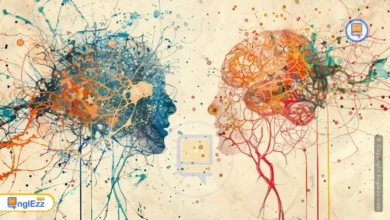The art of accentation is a subtle yet powerful force that can elevate a conversation from mundane to mesmerizing. It’s the subtle nuance of tone, the rhythm of words, and the cadence of language that can convey emotions, intentions, and personality. Yet, despite its importance, accentation is often overlooked, leaving many of us struggling to convey our thoughts and ideas with clarity and conviction. In this post, we’ll delve into the intricacies of accentation, exploring the intricacies of intonation, rhythm, and beyond.
The Anatomy of Accents: Cracking the Code of Intonation, Rhythm, and Beyond
From the subtle art of pitch and stress to the more overt aspects of volume and pace, we’ll examine the various components that make up this complex and multifaceted skill. Whether you’re a seasoned communicator or a nervous newbie, this post will provide you with the tools and techniques to crack the code of accentation, and unlock the full potential of your voice.
The Power of Accentuation: Why It Matters
The art of accentuation is not just a matter of emphasis, but a delicate dance of tone, pitch, and cadence that can make or break the impact of a sentence. It’s the subtle difference between a statement that falls flat and one that resonates deeply. When accentuation is used effectively, it can elevate the meaning of a work, convey nuance and emotion, and even create a sense of authenticity. On the other hand, when it’s neglected, it can lead to a sense of monotony, confusion, and disconnection.

Consider the way a skilled actor can bring a character to life with a single, well-placed emphasis. The way a sentence can be transformed from a dry recitation of facts to a passionate declaration of conviction. The way a subtle shift in intonation can convey empathy, understanding, or even a hint of sarcasm. Accentuation is the secret sauce that adds depth, texture, and personality to language, making it more engaging, more memorable, and more human. It’s the art of making words sing, and it’s an essential tool for anyone who wants to communicate with impact.
Understanding the Basics of Intonation
The art of accentuation is a delicate dance of sound and sense, where the subtle nuances of intonation can make all the difference between clarity and confusion. And yet, for many of us, the basics of intonation remain a mystery, a code that we struggle to decipher. But fear not, dear linguaphile, for today we embark on a journey to crack the code of intonation, rhythm, and beyond.
Let us begin with the fundamentals. Intonation, in its simplest form, is the way we rise and fall in pitch when speaking. It’s the gentle slope of a sentence, the rise and fall of a question, and the emphatic dip of a statement. But there’s more to it than meets the ear. Intonation is a subtle yet powerful tool that can convey emotions, attitudes, and even social hierarchy. A rising intonation can turn a statement into a question, while a falling intonation can add emphasis to a point.
In this section, we’ll delve into the world of intonation, exploring the different patterns and techniques that speakers use to convey meaning and create connection. We’ll examine the role of pitch, volume, and rhythm in shaping our tone, and how these elements can be used to convey a range of emotions, from excitement to boredom. By understanding the basics of intonation, we’ll gain a deeper appreciation for the art of accentuation, and develop the skills to communicate more effectively and engagingly. So, buckle up, linguaphiles, and let’s embark on this journey to mastery!
The Importance of Rhythm in Speech
Rhythm is the unsung hero of spoken language, weaving a subtle yet powerful tapestry of sound and meaning that can elevate or detract from the very words themselves. It is the rhythmic pulse of speech that gives our words a sense of melody, a quality that can make us more engaging, persuasive, and even memorable. Without rhythm, our words can sound flat and lifeless, lacking the emotional resonance that makes them truly impactful.
When we listen to a speaker with a natural rhythm, we can’t help but feel drawn in, our attention riveted by the hypnotic rhythm of their words. Conversely, a speaker who struggles to find their rhythmic footing can leave us feeling disconnected, disengaged, and even disconnected from their message. This is why rhythm is such a crucial aspect of public speaking, whether it’s a sales pitch, a presentation, or a simple conversation.
In this section, we’ll delve into the intricacies of rhythm in speech, exploring how it can be used to create a sense of urgency, build momentum, and convey emotional depth. We’ll also examine the various ways in which rhythm can be applied to enhance our communication, from the way we pause and inflect our words to the use of rhythm to drive home key points and emphasize important messages. By the end of this section, you’ll be equipped with the tools to harness the power of rhythm in your own speech, elevating your communication skills to new heights.
The Art of Emphasis: How to Use Stress to Convey Meaning
The art of emphasis is a subtle yet powerful tool in the art of accentuation. By masterfully deploying stress, or emphasis, on specific words or syllables, speakers can convey meaning, add nuance, and even create a sense of drama or intrigue. This is not simply a matter of loudness or softness, but rather a deliberate choice to alter the rhythm and cadence of speech. A well-placed stress can transform a sentence from a bland statement into a forceful declaration, and a skilled speaker knows just when to apply this subtle yet potent technique.
- For instance, the phrase “I’m going to the store” can be delivered with a neutral tone, but by stressing the word “going” – “I’m GOING to the store” – the speaker conveys a sense of urgency or excitement. Similarly, the phrase “I love you” can be uttered with a flat tone, but by emphasizing the word “love” – “I LOVE you” – the speaker’s sentiment is amplified and becomes more heartfelt.
The art of emphasis is not only about conveying meaning, but also about creating a sense of rhythm and flow. By varying the stress and pace of speech, a speaker can create a sense of musicality, making their words more engaging and memorable. In this way, the art of emphasis is a key element of effective communication, and one that requires practice and attention to master. By learning to use stress to convey meaning, speakers can elevate their language and connect with their audience on a deeper level.
The Role of Pitch and Tone in Accentuation
The nuances of pitch and tone are the subtle yet potent ingredients that can elevate an accent from mere words to a rich tapestry of communication. As we delve into the realm of accentuation, it’s essential to recognize the profound impact that pitch and tone can have on the way we convey meaning and convey our emotions.
Pitch, in particular, is a crucial aspect of accentuation, as it can dramatically alter the tone and emphasis of a sentence. A slight rise in pitch can indicate a question, while a gentle fall can convey a sense of certainty or conclusion. Moreover, the varying degrees of pitch can create a sense of drama, adding emphasis to key words or phrases. Think of a passionate orator, their voice soaring with conviction, as they paint a vivid picture with their words.

Tone, on the other hand, is the subtle yet powerful undertone that flows beneath the surface of our speech. It’s the tone that conveys empathy, humor, or authority, and can be just as effective as the words themselves. A gentle, soothing tone can calm the nerves, while a sharp, authoritative tone can command attention. The art of tone lies in its ability to adjust the emotional resonance of our words, fine-tuning the message to resonate with our audience.
By mastering the subtle yet powerful dynamics of pitch and tone, we can unlock the full potential of accentuation, transforming our words into a symphony of communication that resonates with our listeners.
The Effects of Accent on Communication
The subtle nuances of accent can have a profound impact on our communication, often operating beneath the surface of our conscious awareness. When we speak, our accent can convey not only our geographical origins, but also our cultural background, social status, and even our level of education. In a world where communication is a delicate balance of tone, pitch, and inflection, the tone of our voice can either bridge or widen the gap between ourselves and others.
For instance, a study by the University of California found that listeners who share the same accent as the speaker tend to perceive the message as more authentic and trustworthy, whereas those who don’t may perceive the same message as less credible or even insincere. This highlights the importance of understanding the role of accent in communication, as it can either enhance or hinder the effectiveness of our message.
Moreover, the way we pronounce words and phrases can also influence the way we are perceived by others. For example, a study by the journal Social Psychological and Personality Science found that people who speak with a non-regional accent (i.e. a neutral or “standard” accent) are perceived as more intelligent, competent, and trustworthy than those who speak with a regional accent. This is not to say that regional accents are inherently inferior, but rather that the way we perceive and respond to different accents is often rooted in societal biases and expectations.
In the realm of business, the effects of accent on communication can be particularly significant. For instance, a study by the University of Michigan found that job applicants who have a non-regional accent are more likely to be hired than those who do not. This is not to say that accent is the sole determining factor in hiring decisions, but rather that it can be one of many factors that influence our perception of a candidate’s competence and fit for the role.
In conclusion, the effects of accent on communication are far-reaching and multifaceted, influencing not only the way we perceive ourselves and others, but also the way we communicate and interact with the world around us. By understanding the power of accent in communication, we can better navigate the complexities of language and culture, and cultivate more effective and meaningful relationships.
How to Identify and Practice Good Accentuation
Mastering the art of accentuation requires a deep understanding of the nuances of language, as well as a keen ear for the subtle rhythms and intonations that set apart effective communication from mere chatter. In this section, we’ll delve into the importance of identifying and practicing good accentuation, and provide actionable tips to help you refine your skills.
To begin, it’s essential to recognize the role that accentuation plays in conveying meaning and emphasis. A well-placed stress or pause can entirely shift the tone of a sentence, making all the difference between a clear and ambiguous message. By paying attention to the natural flow of speech, you can develop a sense of how to use accentuation to drive home key points, add emphasis, and create a sense of drama or urgency.
Next, it’s crucial to practice good accentuation in your own speech. This may involve recording yourself and listening back to identify areas where you can improve, or working with a language coach or tutor to develop more nuanced intonation patterns. It’s also important to expose yourself to a wide range of accents and speaking styles, from native speakers to actors and public speakers, to gain a deeper understanding of the various ways in which accentuation can be used to convey meaning.
By combining these skills with a keen awareness of the subtleties of language, you’ll be well on your way to becoming a master of accentuation, able to communicate with clarity, conviction, and charm. So, take the time to hone your skills, and watch as your ability to connect with others through the art of accentuation grows stronger with each passing day.
The Impact of Accent on Cultural Identity
The subtle nuances of accent can have a profound impact on our cultural identity, shaping our sense of belonging and connection to our heritage. When we listen to a speaker’s accent, we are not just processing the sounds and rhythms of their language, but we are also unconsciously making judgments about their social status, education, and cultural background. This is because accent is often closely tied to our upbringing, the community we grew up in, and the values we were taught.
For instance, the Southern American drawl is often associated with warmth, hospitality, and a strong sense of community, while the New York City accent is often linked with toughness, resilience, and a no-nonsense attitude. In this way, accent can be a powerful symbol of cultural identity, conveying our values, beliefs, and worldview to others.
Moreover, accent can also play a significant role in shaping our sense of self and our place in the world. When we hear someone speaking with a distinct accent, it can evoke a sense of nostalgia, familiarity, or even discomfort, depending on our personal experiences and biases. This is why accent can be such a powerful tool in storytelling, music, and performance, allowing artists to convey complex emotions and themes in a way that is both subtle and profound.
In the end, the impact of accent on cultural identity is a complex and multifaceted phenomenon, influenced by a wide range of factors, from history and geography to culture and social status. By exploring and understanding the nuances of accent, we can gain a deeper appreciation for the rich diversity of human experience, and the ways in which our voices can shape our sense of self and our place in the world.
Common Mistakes in Accentuation and How to Avoid Them
As you embark on the journey of mastering accentuation, it’s essential to be aware of the common pitfalls that can hinder your progress. One of the most significant mistakes is neglecting the nuances of intonation. Paying attention to rising and falling tones, as well as the subtle changes in pitch, can make all the difference in conveying meaning and emotion. For instance, a slight rise in tone can turn a statement into a question, while a falling tone can convey a sense of finality.
Another mistake is misjudging the rhythm of the language. Failing to account for the natural cadence of the words and phrases can lead to a stilted or forced delivery, making it difficult for listeners to follow your words. It’s crucial to develop a sense of the natural rhythm of the language, allowing you to convey the message with ease and flow.
Furthermore, neglecting the use of fillers and hesitations can lead to a robotic or artificial delivery. Fillers like “um” and “ah” are an integral part of natural speech, and learning to use them effectively can add a level of authenticity to your accentuation.
Finally, ignoring the importance of breath control and pausing can result in a rushed or breathless delivery. Pausing at the right moments can add emphasis, create drama, and make your message more impactful.
By being aware of these common mistakes and taking steps to avoid them, you can develop a more natural and effective accentuation that will enhance your communication skills and leave a lasting impression on your audience.
Mastering the Art of Accentuation: Tips and Tricks
The art of accentuation is a delicate dance of tone, pitch, and rhythm, requiring precision and practice to execute flawlessly. To master the nuances of accentuation, it’s essential to cultivate a keen sense of auditory awareness, tuning into the subtle variations in pronunciation and stress patterns that can elevate a sentence from mere words to a symphony of sound.
Here, we’ll share some expert tips and tricks to help you refine your skills and take your accentuation to the next level. From the subtleties of syllable stress to the art of judiciously placing emphasis on key words, we’ll delve into the specific techniques and strategies that will help you craft a more nuanced and engaging delivery.
By mastering these techniques, you’ll be able to convey nuanced emotions, convey complex ideas, and add depth and texture to your communication, making you a more compelling and effective communicator. So, get ready to fine-tune your accentuation skills and unlock the full potential of your voice!
The Connection Between Accentuation and Body Language
As we delve into the intricacies of accentuation, it’s impossible to ignore the profound impact that body language has on our communication. The way we move, gesture, and even the subtlest of facial expressions can all be intricately linked to the way we modulate our voices, convey emotions, and assert authority. When we speak, our bodies become an extension of our voice, transmitting a wealth of information that can either reinforce or contradict our words.
Take, for instance, the subtle tilt of the head, which can signal curiosity, interest, or even skepticism. The way we angle our shoulders, or the relaxed or tense posture we adopt, can all influence the way we deliver our words, imbuing them with a sense of confidence, doubt, or enthusiasm. The connection between accentuation and body language is a two-way street, where the way we use our voices can, in turn, shape our nonverbal cues.
- For instance, when we speak with conviction and authority, our body language tends to mirror our tone, with assertive gestures and a strong posture that reinforces our message.
- Conversely, when we’re hesitant or uncertain, our body language may betray our intentions, with fidgeting, avoidance, or a lack of eye contact that can undermine our credibility.
In this delicate dance of accentuation and body language, we find a powerful tool for effective communication, where the subtlest of nuances can make all the difference between conveying confidence, empathy, or authority. By honing our awareness of this intricate connection, we can unlock the full potential of our communication, and become more effective, engaging, and persuasive speakers.
The Science Behind Accentuation: What Research Reveals
As we delve into the intricacies of accentuation, it’s fascinating to explore the scientific underpinnings that govern our ability to modulate our voices with precision and flair. Research has shed light on the complex neural mechanisms that underlie our ability to convey meaning, emotion, and cultural identity through the subtle variations of tone, pitch, and stress.
Studies have shown that accentuation is deeply rooted in the brain’s auditory processing centers, where neural networks dedicated to speech processing and language comprehension are intricately linked. The neural pathways responsible for prosody, the rhythm and stress of speech, are remarkably similar across languages, suggesting that accentuation is an innate, universal aspect of human communication.
Furthermore, research has revealed that our perception of accentuation is closely tied to our emotional and social experiences. For instance, a study on the effects of emotional tone on language processing found that listeners were more likely to remember and recall information when conveyed in a tone that matched their emotional state. This underscores the profound impact that accentuation can have on our communication, influencing not only our ability to convey meaning but also our emotional connection with others.
As we continue to unravel the mysteries of accentuation, we find ourselves at the intersection of linguistics, neuroscience, and social psychology. By understanding the scientific underpinnings of accentuation, we can better appreciate the artistry and nuance that lies at the heart of human communication.
The Role of Accentuation in Building Trust and Credibility
When it comes to building trust and credibility with others, tone and inflection can be just as crucial as the words themselves. Think about it – a well-placed pause or a subtle emphasis on a particular phrase can convey a sense of confidence, authority, and even empathy. Accentuation, in this sense, is the art of using inflection, pitch, and volume to add depth, nuance, and emotional resonance to our communication.
Effective accentuation can be the difference between a message that falls flat and one that resonates with our audience. By using subtle variations in tone and pitch, we can convey a sense of authenticity, sincerity, and emotional intelligence, which are essential for building trust and credibility. For instance, a gentle, rising inflection can convey a sense of inquiry, while a firm, steady tone can convey a sense of authority.
In addition, accentuation can also help to convey a sense of cultural competence, as different cultures and languages often place different emphasis on certain words or phrases. For example, in many Asian cultures, the use of a high-pitched tone can convey a sense of enthusiasm or excitement, while in many African cultures, the use of a low-pitched tone can convey a sense of respect.
By mastering the art of accentuation, we can not only improve our communication skills but also project a more confident, empathetic, and credible presence to others. Whether we’re speaking in a business setting, a personal relationship, or a public forum, the art of accentuation is a powerful tool that can help us build trust, establish credibility, and connect with others on a deeper level.
Overcoming Accentuation Challenges: Strategies for Success
As you navigate the complex world of accentuation, it’s inevitable that you’ll encounter challenges that can hinder your progress. Whether you’re a native speaker struggling to articulate your thoughts with clarity, or a non-native speaker attempting to master the nuances of a foreign language, accentuation can be a daunting task. But fear not, for overcoming these challenges is within your reach. In this section, we’ll explore strategies for success that will help you crack the code of intonation, rhythm, and beyond.
From practicing pronunciation exercises to incorporating music and rhythm into your speech, we’ll delve into the techniques that can help you overcome accentuation challenges and become a more confident communicator. We’ll also examine the importance of self-awareness and self-acceptance, as well as the role of cultural sensitivity and understanding in navigating the complexities of accentuation.
By the end of this section, you’ll be equipped with the tools and knowledge you need to overcome the obstacles that stand in the way of effective communication. Whether you’re seeking to improve your communication skills in a personal or professional setting, or simply looking to enhance your language skills, you’ll find the guidance and support you need to succeed.
We’ve reached the end of our journey into the art of accentation, and we hope that by now, you’ve gained a deeper understanding of the intricacies of intonation, rhythm, and beyond. By mastering the subtle nuances of accentation, you’ll be able to bring your words to life, conveying emotions and ideas with precision and flair.
Whether you’re a seasoned speaker or just starting to explore the world of language, we hope that this article has inspired you to take your skills to the next level. With practice and patience, you’ll be able to crack the code of accentation and unlock the true potential of your voice.









The anatomy of accents decoded! Explore the fascinating world of intonation, rhythm, and how they influence communication in this captivating guide.